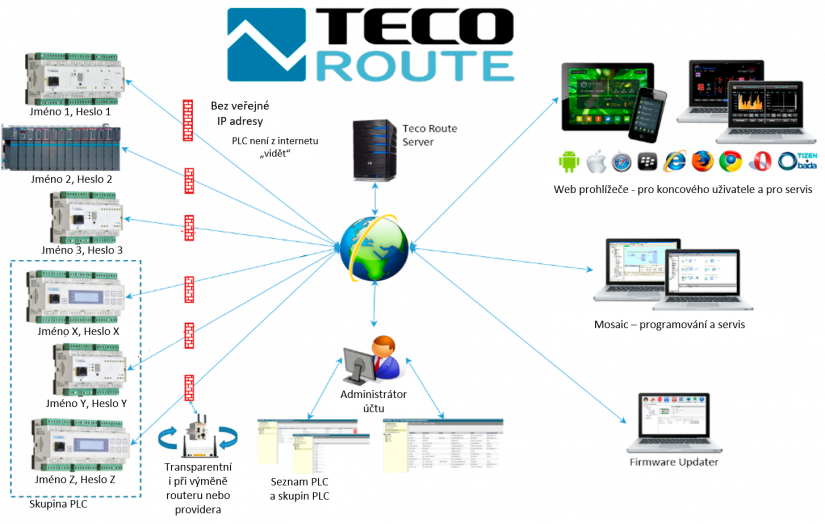Teco has developed a unique TecoRoute communication service for access to an internal web server and user websites without a public IP address. It is unique in that it does not need any external device and it is enough with a SW solution to the problem within the firmware of its own PLC Tecomat, both in the Foxtrot series and in the TC700 series. To register each Tecomat PLC in the TecoRoute service, it is necessary to have an administrator account. It is mostly for society, but it can of course also be for individuals. Tecomat PLCs with a unique name and password for authorization are registered for this account on the one hand, and users with an authorization name and password are also registered on the other side. The account administrator then assigns access rights and roles of individual users to individual or group organized PLCs. The user then has the option of accessing user pages in Tecomat via a web browser, the programmer can have the right to access using the Mosaic programming environment or the right to manage the firmware via the Firmware updater.
A connection without a public IP address allows Tecomats to be securely integrated into local networks, where network administrators do not wish to expose local servers to the Internet. This also ensures that Tecomats are not visible to robots that cyclically bypass all IP addresses and try to attack its insecure subscribers within the local network. TecoRoute runs via https on the certificate server.
During the years of sharp operation, the TecoRoute service has become a proven, common and also the simplest way to remotely connect the installation with Tecomat. Whether it is on the one hand a house, a machine or a concentrator of measured data or on the other hand access via a computer, tablet or today most commonly via a smartphone, which today is equipped with the vast majority of the population. The service is constantly maintained and developed. Recently, it has been an upgrade of an encrypted connection via the S-tunnel, which has further strengthened the stability of the service on https connections. The implementation of authorization via the OAuth2 service is being prepared.

 Čeština
Čeština